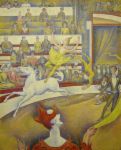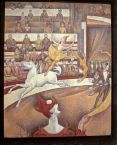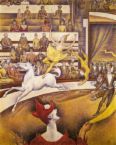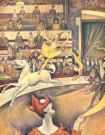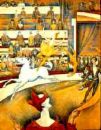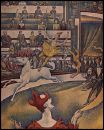The wonders of technology! By using the Adobe Photoshop software to manipulate the colours, saturations, contrast and balance, the effect of and response to the image is changed as shown in the four examples below…
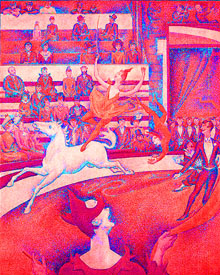

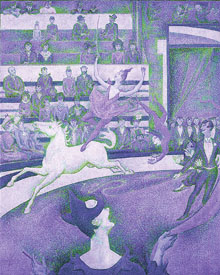

Hues and saturations affect our emotional response. When the image no longer resembles the scene we expect to see in reality, with its natural colours and textures, we begin to interprete the image intuitively, associating colours with emotions and our experiences. The colour in the original image gives a warm glow to the painting. The whole atmosphere in the circus tent is bathed in warm yellow light. The feeling is warm, happy and pleasant.
When the hue is changed, to red, for example, we no longer associate what we see to a realistic scene, but rather associate it with a particular mood. The ‘red’ image evokes a mood that danger is imminent, although at the present moment in the image, all seems well… The ‘blue’ image give off an air that something mysterious, strange and unnatural is happening.
The last two does not conjure up much excitement… In fact, it gives a feel of plainness and dullness (especially the ‘greenish-brown’ one).
Hue and saturation matters a lot to how a piece of work is read and interpreted!
